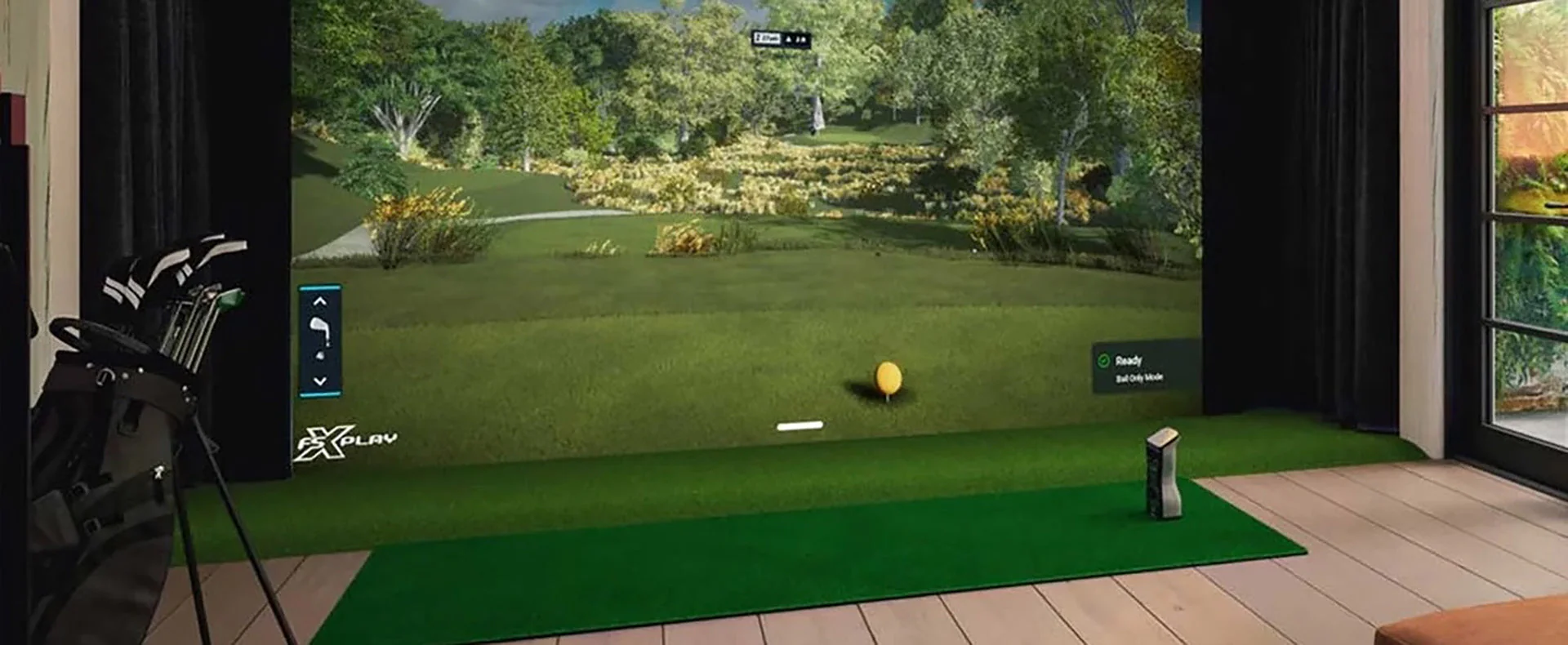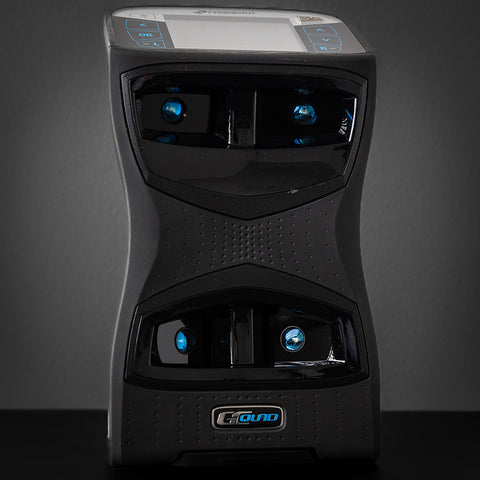
Foresight Sports GCQuad Space Requirements - How Much Space Do You Need? [Home Golf Simulator Guide - Full Indoor/Outdoor Specs]
No doubt the Foresight Sports GCQuad is the right golf launch monitor in your dreams. But is it right for your at-home setup? Find out below!
Not only does the Foresight Sports GCQuad make for the ultimate golf simulator experience, but you can actually save a lot of indoor space by using it.
If you’ve watched recent TV coverage of PGA Tour players warming up on the driving range, or if you’ve attended an event in person, you’ve undoubtedly seen the GCQuad. It is becoming the trusted golf launch monitor of more and more of the game’s top players because of its unmatched accuracy and huge array of data metrics.
The GCQuad also works just as well indoors. Not only is it the most accurate and lifelike golf launch monitor and simulator and the same unit that the pros use, but because it sits to the side of the golf ball rather than behind it, it’s also a space saver.
Combine those two things and it’s clear: For those home golf simulator users who want the best and who don’t want to sacrifice too much room space, the GCQuad is a no-brainer.
Let’s walk through exactly how much space you’ll need to comfortably use a Foresight Sports GCQuad in your ultimate golf simulator studio.
Table of Contents
How Much Indoor Space Do You Need for a Foresight Sports GCQuad Golf Simulator?
When it comes to figuring out how much space is required for an indoor golf simulator, the first thing to consider is the three types of setup options that golf launch monitors present:
- Set on the floor next to the golf ball
- Mounted to the ceiling behind and above the ball
- Set on the floor behind the ball
Of those three options, launch monitors that sit on the floor next to the golf ball require the least amount of room depth.
Floor-standing radar-based launch monitors generally need to sit 6 to 8 feet behind the ball and require another 8 to 13 feet of space between the ball and impact screen. This is because the radar needs to see several revolutions of the ball after impact in order to accurately pick up things like spin rate and shot shape.
Likewise, launch monitors that mount to the ceiling behind the ball also require a lot of room depth in order for the unit to accurately read shots.
But a photometric launch monitor like the GCQuad really doesn’t require any more room depth than what you’d need to swing a golf club comfortably and to be able to hit a shot into an impact screen without the ball ricocheting back into your body.
You don’t need all of that additional space behind the ball because the GCQuad reads golf shots from the side. And because the four cameras in the GCQuad collect all of the information at the moment of impact, you don’t need any excess space in front of the ball either.
Here are our room-size recommendations for comfortably using a Foresight Sports GCQuad indoors:
- 10 feet wide
- 10 feet deep
- 9 feet tall
Please note that while most golfers will be able to use a GCQuad with these room dimensions, you should consider these measurements the minimums.
For example, if you’re using something as premium as a GCQuad for your indoor golf simulator, there’s a good chance you’re going to want an equally premium enclosure and impact screen. PlayBetter.com sells turnkey packages in options that are 10 feet wide, 12 feet wide, or 13 feet wide. While you certainly can use a GCQuad with a 10-foot-wide enclosure, you may want the better luxury and larger image that something like the 13-foot-wide option provides.
As for ceiling height, 9 feet is likely sufficient for most golfers, but, of course taller golfers with longer swings may require even higher ceilings.
But before you get too enamored with the space-saving benefits of a golf launch monitor like the Foresight Sports GCQuad, it is important that you understand one key limitation this kind of product presents.
The Downside of the Space-Saving Foresight Sports GCQuad Golf Launch Monitor
The tradeoff for having a golf launch monitor like the GCQuad that sits to the side of the ball and requires so much less room depth is that it’s a bit of a pain if you have right-handed and lef-thanded golfers playing at the same time.
With a launch monitor that sits or is mounted behind the ball, you can stand on either side of the ball without having to move the launch monitor. Conversely, with the GCQuad, if you switch from a righty to a lefty, you’ll need to move the golf launch monitor to the opposite side of the ball. That’s certainly going to disrupt the rhythm of a simulated round of golf.
So while there’s no disputing the incredible performance of the GCQuad and the space-saving benefits it provides, it is important that you consider who is likely to use your golf simulator studio. Will you regularly play with both righties and lefties? If so, the GCQuad could present some challenges. An option like the Foresight Sports Falcon might be preferable.
Is the Foresight Sports GCQuad a Good Indoor Golf Simulator Option?
Not only is the GCQuad a good golf simulator option, it’s an absolutely awesome one!
With accuracy so good it’s trusted by the world’s best golfers, it makes for an incredibly realistic simulator experience. Spin rates, shot shapes, distances — all of the things that lesser launch monitors can do reasonably well but not quite perfect — are so spot-on accurate with the GCQuad that the shots are just like what you experience out on the real golf course.
Also, the Foresight Sports FSX Play, FSX 2020, and FSX Pro simulator software packages, which are all included with the purchase of a GCQuad, are renowned for their lifelike graphics and ease of use. And you get 25 fully-loaded simulator golf courses right out of the box.
If you’re looking for a high-end, realistic golf simulator, the Foresight Sports GCQuad is the gold standard. Just make sure you’ve considered that righty-lefty golfer limitation.
About PlayBetter Golf Reviewer Marc Sheforgen
Marc "Shef" Sheforgen is a golf writer whose passion for the game far exceeds his ability to play it well. Marc covers all things golf, from product reviews and equipment recommendations to event coverage and tournament analysis. When he’s not playing, watching, or writing about golf, he enjoys traveling (often golf-related), youth sports coaching, volunteering, and record collecting.


















